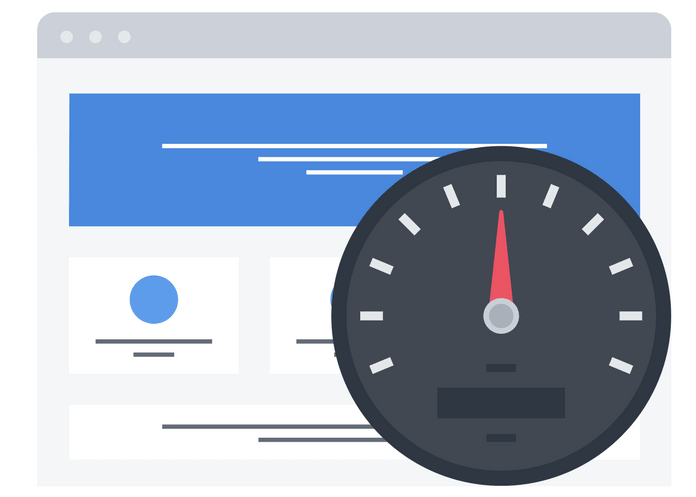Latest news about Bitcoin and all cryptocurrencies. Your daily crypto news habit.

Written by Michael Del Gigante
Speedy loading times are essential to great customer experience, and they can even impact your SEO. Why does loading time matter, and how can you get your site up to speed? The web experts at MDG Advertising have answered those questions and more below.
Why Do Loading Times Matter?
Developers have long taken loading times into consideration as they create websites. However, as consumers rapidly switch to a mobile-only environment, site speed is no longer just a consideration. Customers expect pages to load quickly on mobile, and 46% say that slow site speed is a nuisance when browsing online on their devices.
Sluggish load times present two major issues for marketers: first, they lead to decreased engagement and discourage the visitor from taking action — including making a purchase. Pages that load slowly tend to generate less revenue than their speedier counterparts. Plus, slow load times can cause a higher bounce rate: a load time of one second that increases to three seconds can increase the bounce rate by 32%. If loading times take 10 seconds, the bounce rate skyrockets to 123%.
How Can Loading Times Impact SEO?
There’s no doubt that search engines value quick loading times. Google and other search engines work to provide the most valuable information possible, which usually means that a fast-loading page is featured first. Google, in particular, has been transparent about this fact; last year, it reported that it would look at loading times for mobile sites, in addition to desktop sites. The search engine giant stated that users want fast, relevant information, whether on mobile or desktop.
Google focuses on a variety of factors when analyzing site speed. Start to render (when a page begins to materialize), visual complete time (when a user first views the page, even if it hasn’t completed loading), as well as time to the first byte are all characteristics Google will consider when assigning rankings.
With such a nuanced approach, marketers may wonder just how fast a site must be to catch Google’s attention. While an exact standard can’t be pinpointed, site speed’s importance cannot be understated. A study from Backlinko found that, ultimately, slow-loading pages fall much lower in rankings than fast-loading sites.
How Fast Should a Website Load?
Most marketers know that site speed can have an impact on search rankings and conversions, but just how quickly should a website load? It depends on a variety of factors, including the site type and the connection speed. Customers expect speedy loading times over, say, a company Internet connection, but may be more patient over 3G. Additionally, customers could expect a financial website to load faster than a media site.
Regardless of the site, however, speed still rules. Only 27% of users will wait three seconds for a website to materialize on mobile. Thirty-two percent will wait up to six seconds, but only 24% will wait for a full six seconds or more.
It’s clear that customers demand quick loading times, yet many brands aren’t optimizing their pages. Across multiple industries, websites can be found that take five seconds, or even six, to fully load.
How Can Brands Increase Site Speed?
When developing a website, several factors can affect loading times, including code handling, media compression, and caching. Fortunately, developers have several speed-boosting tools at their disposal, including Google’s PageSpeed Insights. This tool allows you to flag potential problems, benchmark pages, and view recommendations for improving performance.
If you publish a large amount of content, Google’s AMP tool or Facebook’s Instant Articles may help. These platforms help to increase loading times by hosting a portion of the content for you.
Remember that building a speedy site can take time. However, even small adjustments can make an impact on the consumer experience. In fact, Google’s research revealed that users begin to see a difference in lag time between 100 and 300 milliseconds. These incremental changes add up, meaning that if you wish to improve site performance, now’s the time to start.
About Michael Del Gigante, CEO of MDG Advertising
In 1999, CEO Michael Del Gigante founded MDG Advertising, a full-service advertising agency with offices in Boca Raton, Florida, and Brooklyn, New York. With his unique insight and decades of industry experience, he turned what was once a traditional ad agency into an integrated branding firm based on an innovative 360-degree marketing philosophy that provides a full spectrum of traditional and digital advertising services.
Why You Should Take Site Speed More Seriously was originally published in Hacker Noon on Medium, where people are continuing the conversation by highlighting and responding to this story.
Disclaimer
The views and opinions expressed in this article are solely those of the authors and do not reflect the views of Bitcoin Insider. Every investment and trading move involves risk - this is especially true for cryptocurrencies given their volatility. We strongly advise our readers to conduct their own research when making a decision.